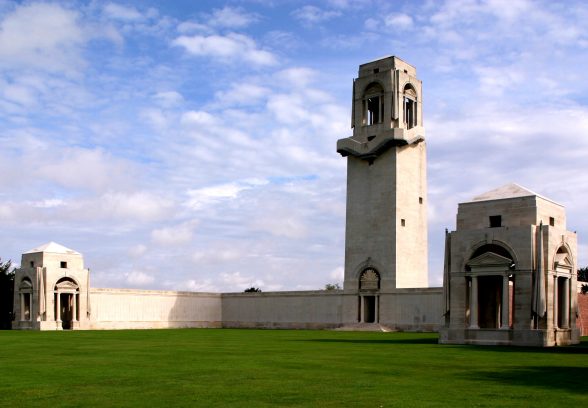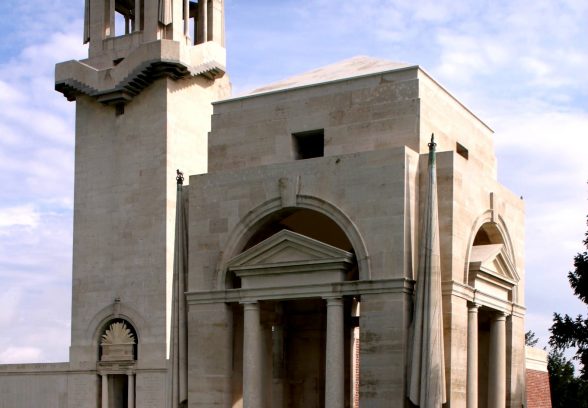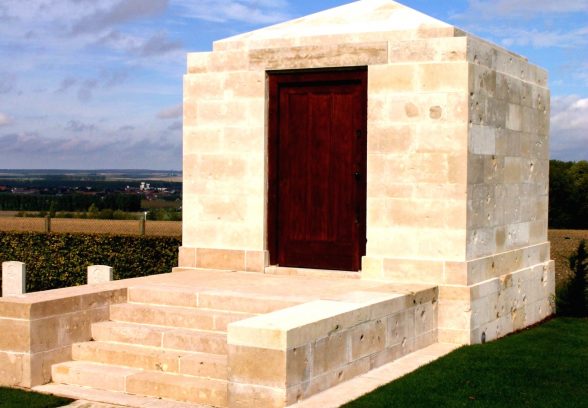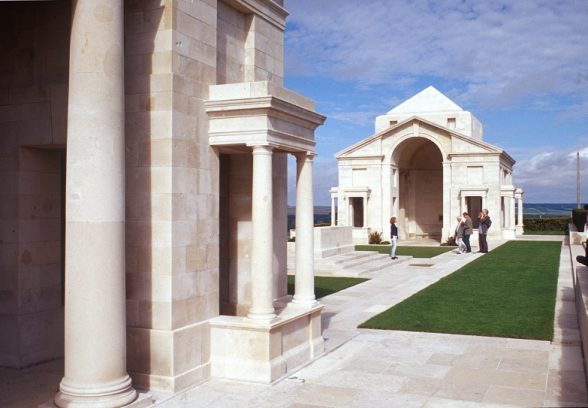This website uses cookies
This website uses cookies to enable it to function properly and to analyse how the website is used. Please click 'Close' to accept and continue using the website.






France: Villers-Bretonneux Military Cemetery & Australian National Memorial, Fouilloy
Architect: Sir Edwin Lutyens
Owners: Commonwealth War Graves Commission
Location: Somme, France
Villers-Bretonneux is where Australian troops halted Ludendorf’s offensive towards Amiens in March 1918, so it was chosen as the location of the Australian national war memorial. The site chosen was at the top of the convex slope on which Villers-Bretonneaux Military Cemetery was being laid out. This was completed in 1930 and was designed by Lutyens (with Goldsmith as Assistant Architect) who placed two exquisite lodges with interpenetrating orders at the bottom of the slope by the road. A competition for the memorial was held in 1925 and assessed by Sir Giles Gilbert Scott. The winner was the Australian architect William Lucas, who proposed a tall open lookout tower with four giant internal columns of polished trachyte supporting the observation platform. The design was eventually approved by President Clémenceau of France in 1929 but work was suspended the following year for economic reasons.
Lucas’s project was disliked by Sir Fabian Ware, by Colonel J.S. Murdoch, chief architect to the Commonwealth of Australia, and by General Sir Talbot Hobbs, who had chosen the site. Hobbs lobbied against it and asked Lutyens to prepare a more modest design. Lucas strenuously protested, but in vain. Lutyens was given permission to proceed in 1935 but Hobbs then rejected his design, insisting on a central observation tower. Lutyens then came up with a tower with a partly external staircase to gain access to the covered. observation platform. This is flanked by lateral walls which end in pavilions which have both stone flags and aedicules standing free in space within arches – a Mannerist idea which can be traced back to some of Lutyens’s earliest Classical work. Work began in 1936 and it was unveiled by King George VI in 1938 – the last memorial to be completed. Two years later it was damaged in the German invasion of France. The memorial commemorates 10,866 missing Australian soldiers. The cemetery contains 2,120 burials.
Gavin Stamp
Commonwealth War Graves Commission
Either enter the name of a place or memorial or choose from the drop down list. The list groups memorials in London and then by country

Become a C20 member today and help save our modern design heritage.